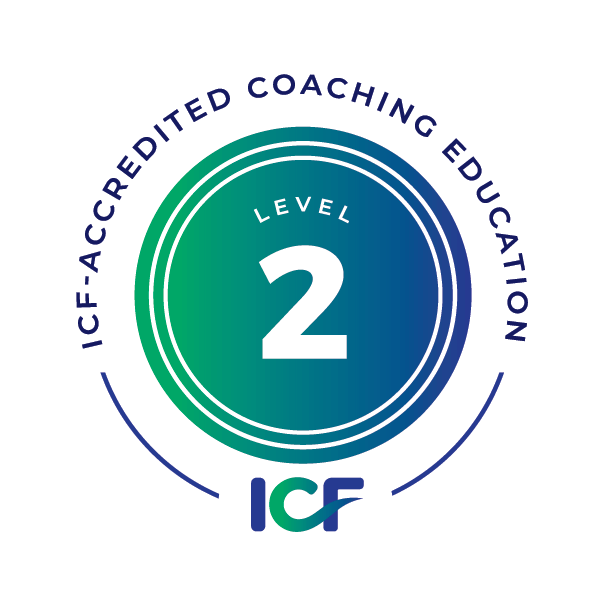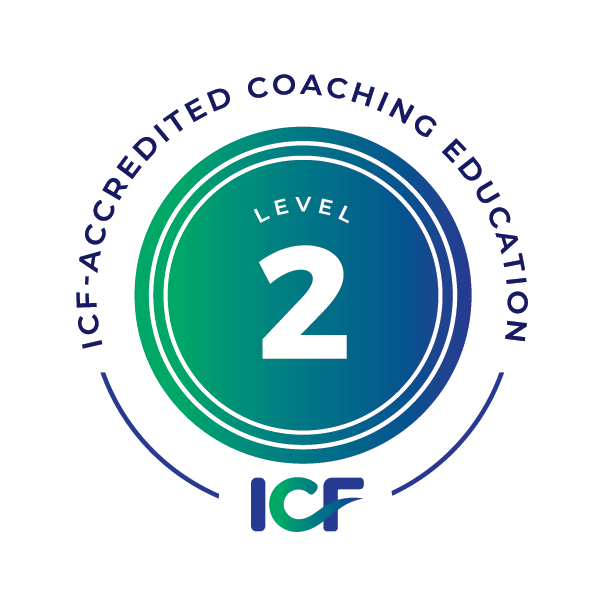Introduction: Mastering Active Listening for Team Coaches
Active listening is a foundational skill for any successful team coach. It’s more than just hearing words—it’s about understanding the deeper meaning behind what’s said and unsaid, picking up on the team’s dynamics, and creating a space where every voice is valued. For ICF professional coaches, mastering active listening can be a transformative tool in their coaching practice, especially when working with teams where multiple perspectives need to be navigated.
In this article, we’ll explore the ICF core competency of active listening and why it’s essential for building trust and fostering collaboration in team coaching settings. You’ll learn techniques for improving your listening skills, how to recognize subtle cues like energy shifts, and how to apply these strategies in real-world team coaching sessions. Whether you’re already a coach or looking to deepen your understanding of team dynamics, this guide will give you practical insights to enhance your coaching practice.
By the end of the article, you’ll have a clear understanding of how active listening supports ICF PCC team coaching competencies and how it can unlock new levels of success in your coaching engagements.
Key Insights
- The Power of Active Listening in Team Coaching: Active listening builds trust, encourages collaboration, and helps coaches uncover hidden team dynamics.
- ICF Core Competency: Active listening is a crucial ICF core competency that supports effective communication and problem-solving in team settings.
- Improving Active Listening Skills: Techniques such as reflective questioning and non-verbal observation can enhance active listening in team coaching.
- Building Team Trust: Active listening creates a psychologically safe environment, allowing team members to feel heard and valued.
- Conflict Resolution: Active listening is a vital tool for resolving conflicts, helping team members understand each other’s perspectives and facilitating effective dialogue.
- Monitoring and Adaptation: Continuous monitoring through active listening enables coaches to identify challenges early and adjust strategies as needed.
- ICF Certification and Active Listening: Mastering active listening is essential for coaches seeking ICF certification, as it strengthens communication and trust within teams.
Understanding ICF Core Competencies for Team Coaches
The ICF core competencies outline the critical skills that all professional coaches must develop. For team coaches, these competencies take on unique importance as they involve navigating multiple voices, perspectives, and emotions in real-time. Among these, active listening stands out as a key tool for creating meaningful interactions between team members and the coach.
In team settings, listening goes beyond hearing spoken words. It involves paying attention to non-verbal cues, understanding the emotional context of what’s being shared, and synthesizing information from multiple participants. Mastering this competency allows coaches to identify themes and patterns in team behavior, which can lead to more impactful interventions.
“The most basic of all human needs is the need to understand and be understood. The best way to understand people is to listen to them.” – Ralph Nichols
For team coaches, the ability to listen actively is essential for building trust within the group. When team members feel heard and understood, they are more likely to open up and contribute meaningfully to the conversation. This deep engagement is what helps teams reach new levels of collaboration and success.
Defining Active Listening in the Context of Team Coaching
In team coaching, active listening involves being fully present and attentive to all members of the group. It’s not just about listening to one person but capturing the overall dynamics of the team. Coaches must listen for what is being said, but also for the unspoken—the emotions, tensions, or agreements that haven’t been voiced yet.
Active listening is particularly challenging in a team setting because of the diversity of voices. Each team member brings their own experiences and perspectives, and it’s up to the coach to ensure that all these perspectives are understood and respected. By incorporating active listening in team coaching programs, you can facilitate better communication, improve decision-making, and resolve conflicts more effectively.
Through reflection and summarization, coaches can help teams clarify their thoughts and align their goals. This not only fosters better teamwork but also strengthens the coach’s role as a trusted facilitator. By listening actively, coaches empower teams to work together more effectively, bringing out the best in each member while driving the team toward shared success.
How to Improve Active Listening in Team Coaching
Improving active listening in team coaching begins with building the habit of being fully present. In a team environment, distractions can easily pull a coach’s attention away, especially when multiple voices are speaking. To become better at listening, team coaches need to practice mindfulness and remain focused on the present moment, tuning into both verbal and non-verbal cues from the team members.

Techniques to Enhance Active Listening for Team Coaches
One effective strategy is to develop active listening exercises. These can include summarizing what each team member says at intervals to ensure understanding or using reflective questions to help the group gain clarity. For example, coaches can ask, “What I’m hearing is that we’re facing a challenge with communication. Is that correct?” This not only clarifies the situation but also encourages open dialogue.
Non-verbal communication is another important aspect. By paying attention to body language, tone of voice, and energy shifts, coaches can gather information beyond the words being spoken. Recognizing these signals helps identify unspoken concerns and team tensions, which can be addressed in a supportive way. Using reflection, coaches can prompt further exploration by noticing shifts in tone or energy, saying, “I noticed a change in your tone when you mentioned the project deadline. Could you share more about that?”
By incorporating these techniques to enhance active listening, team coaches create a stronger connection with the group, allowing for deeper insights and more effective collaboration.
“The most important thing in communication is hearing what isn’t said.” – Peter Drucker
In this way, active listening becomes a key tool not only for understanding what’s being communicated but also for uncovering deeper insights that might otherwise go unnoticed.
Key Benefits of Active Listening in Team Coaching
The benefits of active listening in team coaching extend beyond individual conversations. For coaches working with teams, listening actively creates an environment where everyone feels valued and understood. When team members feel heard, they are more likely to engage, contribute, and collaborate. This is particularly important when coaching teams that may have conflicting goals or perspectives.
How Active Listening Enhances Team Coaching Effectiveness
One of the most significant outcomes of active listening is trust-building. In team settings, trust can be fragile, especially when there is a history of misunderstandings or miscommunication. By using active listening to enhance team coaching effectiveness, coaches can help repair trust by demonstrating empathy and showing that they genuinely care about the team’s success.
In addition, active listening helps teams uncover underlying issues that may not be immediately apparent. When coaches listen for themes, patterns, and recurring concerns, they can guide the team to a deeper understanding of their challenges. This often leads to better problem-solving and more cohesive decision-making, as the team begins to see the bigger picture.
Active listening also empowers teams to take ownership of their progress. When team members feel heard and validated, they become more invested in the team’s goals and more accountable for their contributions. This creates a positive feedback loop, where the team becomes more engaged, collaborative, and aligned with the shared vision.
By improving communication and trust, active listening can truly transform the way teams work together, helping them achieve greater success.

Practical Strategies for Developing Active Listening Skills
Improving active listening as a coach requires intentional practice, especially in team environments where multiple perspectives come into play. One of the most effective ways to develop these skills is through structured exercises that encourage presence, focus, and empathy. Let’s dive into some practical strategies that can help you strengthen your active listening abilities.
Active Listening Exercises for Team Coaches
To enhance your team coaching techniques, consider implementing listening exercises that involve both individual and group participation. For instance, one exercise could be the “paraphrase and confirm” method, where a coach listens to a team member’s concerns and then summarizes what they’ve heard, asking for confirmation of understanding. This ensures that the coach captures not only the words but the underlying meaning as well.
Another exercise involves creating intentional moments of silence after a team member speaks. Silence allows both the coach and the team to reflect on what’s been said, providing space for deeper insights and encouraging others to contribute. These techniques help foster more meaningful dialogue and support the growth of active listening within the team.
By incorporating these active listening exercises into your coaching sessions, you’ll foster an environment where team members feel heard and validated, leading to better communication and collaboration.
“We have two ears and one mouth so that we can listen twice as much as we speak.” – Epictetus
This timeless quote highlights the importance of listening over speaking—a principle that is central to mastering active listening in a team coaching context.
Tools for Effective Communication in Coaching Teams
As coaches, having the right tools to foster effective communication is essential. Techniques such as using reflective questions can help you delve deeper into what your team is really expressing. Questions like, “How does this challenge impact the team’s overall goal?” encourage team members to think critically and communicate more openly about underlying issues.
Additionally, using non-verbal cues such as eye contact, nodding, or leaning in when a team member speaks can subtly show that you’re engaged and focused. Non-verbal communication plays a significant role in active listening, especially in group settings where multiple people may be vying for attention. Recognizing these cues also helps the coach to address unspoken concerns within the team.
Common Challenges in Active Listening for Team Coaches
Though active listening is an essential skill for team coaches, it is not without its challenges. Coaches often struggle to stay fully present when there are multiple voices or competing priorities within a session. The key to overcoming these challenges is recognizing and addressing them before they derail the conversation.
Overcoming Distractions and Staying Present
One of the most common barriers to effective team coaching is the presence of distractions—whether internal (your own thoughts) or external (team dynamics). To combat this, coaches must train themselves to focus solely on the present conversation, pushing aside preconceived ideas or assumptions. Practicing mindfulness, such as deep breathing or short moments of reflection, can help a coach remain centered and attentive.
A useful technique for staying present is the “pause and reflect” method. Before responding to a team member, take a brief pause to consider their words fully, allowing space for reflection. This strategy prevents impulsive responses and promotes a thoughtful, measured dialogue that keeps the conversation on track. Coaches can also use this method to identify non-verbal communication, such as body language shifts, that might signal an unspoken issue or tension within the team.
“To listen closely and reply well is the highest perfection we are able to attain in the art of conversation.” – François de La Rochefoucauld
By adopting these strategies, coaches can overcome the common challenges of active listening, creating a more open and engaging team environment where everyone’s voice is heard.
Managing Multiple Voices and Perspectives in Team Coaching
In a team setting, multiple people speaking at once or offering conflicting opinions can make it difficult to maintain focus. A coach must skillfully manage these moments by guiding the conversation and ensuring that each participant has a chance to speak without dominating the discussion.
To manage multiple voices effectively, create clear ground rules for team discussions, such as speaking one at a time and actively listening when others are contributing. As a coach, you can also intervene by summarizing and connecting different perspectives, helping the team to find common ground or move toward a collective solution.
By recognizing the challenges and actively working to mitigate them, team coaches can foster a productive, balanced environment where every team member feels valued and understood.

Discover ICF PCC and ICF ACTC Team Coaching Competencies and Mastery
Are you eager to magnify the impact of your coaching practice?
Our ICF Team Competencies program offers a seamless transition for those who have mastered the core competencies, allowing you to delve deeper into the complexities and rewards of team coaching.
Explore this opportunity today.
How to Incorporate Active Listening into ICF Coaching Sessions
Active listening plays a central role in the success of ICF coaching sessions, especially in team environments where coaches must navigate multiple viewpoints. By focusing on what is said—and more importantly, what is not said—coaches can help teams reach deeper levels of understanding and collaboration. To effectively incorporate active listening into your ICF sessions, it’s essential to customize your approach to each team’s unique dynamics.
Customizing Coaching Questions Based on Active Listening
Incorporating customized coaching questions is one of the most impactful ways to apply active listening in your team coaching practice. By carefully observing the team’s verbal and non-verbal cues, you can formulate questions that dig deeper into what’s being expressed. For example, if you sense uncertainty in a team member’s response, a useful follow-up might be, “It seems like there’s more behind what you’re saying. Can you elaborate?”
This reflective questioning encourages team members to open up, providing deeper insights into the challenges or emotions at play. By integrating active listening into ICF coaching sessions, you help the team uncover hidden issues and facilitate more meaningful conversations. This not only builds trust but also empowers the team to collaboratively solve problems.
“The art of conversation lies in listening.” – Malcolm Forbes
Using this strategy creates space for reflection, allowing the team to connect with their own ideas and come to collective conclusions that they might not have reached otherwise.
Recognizing Themes and Patterns Across Sessions
Another key benefit of active listening is the ability to recognize themes and patterns in the team’s behavior over time. During a series of coaching sessions, you might notice recurring phrases, emotions, or concerns that reveal deeper truths about the team’s dynamics. Identifying these patterns allows the coach to bring attention to the underlying issues that may be driving the team’s behavior, which in turn fosters more effective solutions.
By acknowledging these recurring themes, a coach can prompt the team to reflect on how their actions and communication styles contribute to the current situation. This can lead to breakthroughs in understanding and communication, helping the team move forward with a clearer and more unified approach.
How to Develop Active Listening in Group Coaching
Group coaching presents its own unique challenges when it comes to active listening. The dynamics of a group are inherently more complex than one-on-one coaching, and it requires a coach to be even more vigilant in ensuring that all voices are heard and valued.
Understanding Group Dynamics Through Listening
The first step to developing active listening in group coaching is to understand the specific dynamics of the group you are working with. Every team has its own set of personalities, communication styles, and unspoken rules, all of which influence how they function together. As a coach, your role is to identify these dynamics by listening carefully to how team members interact with one another.
Incorporating group dynamics through listening helps you tailor your approach to ensure that every individual feels heard, and that the group works together cohesively. For example, if you notice that certain members dominate the conversation while others remain silent, you might intervene with questions like, “I’d love to hear from someone who hasn’t had a chance to speak yet. What are your thoughts on this topic?”
By being attentive to these dynamics, coaches can facilitate more balanced discussions, leading to better engagement from all team members.
“You cannot truly listen to anyone and do anything else at the same time.” – M. Scott Peck
This quote underscores the importance of being fully present in group coaching sessions, where the coach must constantly monitor the flow of communication to ensure all voices are respected.
Facilitating Constructive Feedback and Open Dialogue
One of the key responsibilities of a coach is to create a safe space where team members feel comfortable offering constructive feedback and engaging in open dialogue. When team members feel heard and valued, they are more likely to share their thoughts and concerns openly. Encouraging this kind of feedback fosters a culture of trust and accountability within the team.
By facilitating constructive feedback and encouraging open dialogue, coaches can help teams resolve conflicts and reach decisions more effectively. This leads to stronger collaboration and ultimately, better outcomes for the team as a whole.

The Role of Active Listening in Building Team Trust
One of the most profound effects of active listening in team coaching is its ability to build trust among team members. Trust is the foundation of any effective team, and without it, collaboration falters. When a coach actively listens to each team member, it fosters a sense of respect and mutual understanding, both essential elements of trust.
Fostering Psychological Safety Through Active Listening
A key outcome of active listening in teams is the creation of psychological safety. Psychological safety means that team members feel safe to speak their minds without fear of judgment or retaliation. By listening attentively and reflecting back what is heard, the coach validates the team members’ feelings and thoughts. This, in turn, encourages others to share openly, knowing their contributions will be respected.
Using active listening to enhance team coaching effectiveness is particularly impactful when there are differing opinions or tense situations. When team members trust that their voices are genuinely being heard, they are more likely to contribute honestly, fostering better decision-making and creative problem-solving. This level of trust can make the difference between a disconnected team and one that collaborates effectively.
“Trust is built when someone is vulnerable and not taken advantage of.” – Bob Vanourek
Coaches who master active listening create a space where vulnerability can exist without fear, enabling teams to share their struggles, triumphs, and ideas more freely.
Creating an Inclusive Environment by Listening to All Team Members
An often overlooked but critical component of team coaching is ensuring that every voice is heard. This is particularly true in teams where certain members may be more dominant than others. Active listening helps to create an inclusive environment by giving quieter or less assertive team members the opportunity to speak and be heard.
In these cases, a coach can use reflective listening techniques to draw out contributions from everyone, asking open-ended questions like, “We’ve heard some great ideas so far. What are some additional perspectives we might not have explored yet?” This encourages quieter team members to share their views, reinforcing the idea that every contribution is valuable.
By actively listening to all team members, coaches can prevent groupthink, ensuring that the team benefits from a wider range of perspectives. This not only builds trust but also leads to more innovative and comprehensive solutions to the team’s challenges.
ICF Accredited Team Coaching Skills Training
As team coaching grows in demand, more coaches are seeking formal training and accreditation to sharpen their skills. ICF accreditation is widely recognized as a mark of excellence in coaching, and one of the core skills it emphasizes is active listening. Developing this skill is essential for those who want to effectively guide teams through complex challenges.
Why ICF Certification Emphasizes Active Listening
Active listening is a central pillar of the ICF coaching certification because it ensures that coaches can foster better communication, collaboration, and trust within teams. The ability to listen fully—without distraction or bias—allows a coach to understand the team’s true needs and tailor their guidance accordingly.
This emphasis on listening helps coaches build the trust and rapport needed to facilitate transformative sessions. Coaches who possess strong active listening skills can navigate complex group dynamics with greater ease, enabling them to help teams align on goals and resolve conflicts.
ICF’s focus on team coaching competencies highlights how listening deeply and reflecting back to the team is not just a passive act but an active tool for guiding the group toward greater success. Whether you are just starting out as a coach or advancing to PCC certification, mastering active listening is critical to becoming an effective team coach.
Effective Team Coaching Strategies Using Active Listening
Active listening is at the core of effective team coaching strategies, enabling coaches to foster collaboration and guide teams toward meaningful solutions. By paying attention to both what is said and what remains unsaid, coaches can uncover hidden challenges, guide decision-making, and encourage deeper group engagement.
Encouraging Collaboration and Understanding in Team Settings
One of the most powerful ways to use active listening in team coaching is by fostering collaboration. When coaches model active listening, it creates an environment where team members feel valued and more willing to engage in open dialogue. This, in turn, promotes better understanding among the group.
A strategy coaches can implement is encouraging reflective listening within the team itself. For instance, after one member speaks, another member could be prompted to paraphrase or reflect on what was said before contributing their own ideas. This process ensures that team members fully understand one another and feel that their contributions are acknowledged. Implementing these strategies will strengthen team bonds and improve overall effectiveness.
By integrating active listening as a foundation for team decision-making, coaches enable teams to approach decisions with clarity and collective alignment. This not only leads to stronger decisions but also promotes a sense of ownership within the team.
“Listening is a magnetic and strange thing, a creative force. The friends who listen to us are the ones we move toward.” – Karl A. Menninger
Active Listening as a Tool for Conflict Resolution
Conflict is a natural part of team dynamics, but how it is addressed can either break down or strengthen the team. Active listening is one of the most effective tools in a coach’s arsenal for managing and resolving conflict. By carefully listening to all perspectives and asking reflective questions, coaches can diffuse tension and guide teams toward mutual understanding.
When conflict arises, a coach can step in to facilitate a conversation where all team members feel heard. This involves not only listening to the surface-level disagreement but also probing deeper to understand the underlying emotions and motivations that are fueling the conflict. A coach might ask, “Can you explain what specifically is causing frustration in this situation?” to help identify the root of the issue. By helping the team listen to each other more effectively, coaches create the space needed for resolution.
Using active listening to resolve team conflicts fosters empathy and encourages collaborative problem-solving, which ultimately strengthens the team’s ability to function cohesively in the future.

Case Studies: The Impact of Active Listening in Coaching
Real-world examples provide compelling evidence of the power of active listening in team coaching. By exploring how this core competency transforms teams, coaches can gain deeper insight into its practical application and long-term benefits.
Real-Life Examples of Active Listening Transforming Teams
In one notable case, a team struggling with communication breakdowns implemented active listening techniques under the guidance of a coach. By encouraging each member to reflect on what was said before responding, the team saw a marked improvement in both communication and trust. The coach also helped the group identify recurring patterns of miscommunication, enabling them to address the root causes and improve their workflow.
Another example involves a high-performing team facing a major project deadline. Tensions were running high, leading to friction between members. The coach used active listening to guide the team through an exercise where each member expressed their concerns and frustrations without interruption. By simply listening to each other, the team was able to empathize with one another’s perspectives, and tensions eased significantly. As a result, they successfully met the project deadline and improved their future collaboration.
These real-world applications of active listening highlight its importance in navigating team dynamics, building trust, and achieving results.
Monitoring and Adaptation in Team Coaching
Once a team has established goals and strategies, the next critical step is ensuring those plans are monitored and adapted over time. Monitoring and adaptation ensure that teams stay aligned with their objectives, even as circumstances change. This process involves regular check-ins, performance evaluations, and adjustments to keep the team on track.
Using KPIs to Track Team Progress
One of the most effective ways to monitor a team’s progress is by setting Key Performance Indicators (KPIs). These metrics give the team clear targets and allow for objective evaluation of success. For example, a team working on improving internal communication might track the number of misunderstandings in meetings or how quickly decisions are made.
By regularly reviewing KPIs, coaches can assess whether the team is moving in the right direction or if adjustments need to be made. These reviews also provide an opportunity for teams to reflect on what’s working and what isn’t. Using evaluation frameworks in coaching sessions helps teams stay aligned with their overall goals and allows the coach to guide them toward making necessary course corrections.
“What gets measured gets improved.” – Peter Drucker
This quote highlights the importance of monitoring progress to achieve continuous improvement. Without regular evaluation, teams may lose sight of their goals or fail to adapt when challenges arise.
Adjusting Strategies Based on Team Feedback
As part of the adaptation process, it’s essential for coaches to actively listen to team feedback. Teams are often the best source of information about what’s working and what needs to be adjusted. When team members feel heard, they are more likely to engage fully in the process of improvement.
Coaches should facilitate regular feedback sessions where teams can discuss their challenges, successes, and any necessary adjustments to the strategy. This promotes a collaborative environment where teams feel empowered to take ownership of their progress. By incorporating active listening in these feedback sessions, coaches help teams refine their approach, ensuring that they remain agile and responsive to new developments.
Conclusion: Why Active Listening is a Game-Changer for ICF Team Coaches
Active listening is one of the most powerful tools a team coach can possess. It builds trust, fosters collaboration, and enables teams to work together more effectively. For coaches pursuing ICF certification, mastering this competency is essential for guiding teams toward meaningful, lasting change.
By integrating active listening into their coaching practice, coaches not only improve communication within the team but also help uncover hidden dynamics that can lead to breakthroughs. Whether it’s navigating conflicts, driving collaboration, or aligning a team around shared goals, active listening lays the foundation for success.
For those looking to deepen their coaching skills, programs like the ICF PCC team coaching competencies provide structured guidance on how to incorporate active listening into every aspect of the coaching process. It’s a skill that goes beyond simply hearing—it’s about truly understanding and responding to the team’s needs.
“To listen well is as powerful a means of influence as to talk well, and is as essential to all true conversation.” – Chinese Proverb
Active listening transforms the role of a coach from a passive observer to an active participant in the team’s journey. By truly understanding what the team is communicating, coaches can guide them to greater heights of collaboration, creativity, and success. In the end, it’s not just about hearing the words—it’s about listening to the people behind them.
FAQs About Active Listening in Team Coaching
Why is active listening important in team coaching?
Active listening allows coaches to fully understand both verbal and non-verbal communication within a team. It helps build trust, ensures that every team member feels heard, and fosters better collaboration. When implemented effectively, it leads to deeper insights and more aligned decision-making.
How can I improve my active listening skills as a team coach?
Techniques such as reflective listening, summarizing what’s been said, and asking open-ended questions can significantly improve your active listening skills. Practicing mindfulness and observing non-verbal cues like body language and tone also help coaches stay fully present.
What are some actionable strategies for team coaching?
To improve team performance, you can implement strategies like setting SMART objectives (Specific, Measurable, Achievable, Relevant, Time-Bound) and creating detailed action plans that define roles and responsibilities. Monitoring progress through KPIs (Key Performance Indicators) ensures teams stay on track.
How does active listening help in resolving team conflicts?
Active listening helps diffuse tensions by allowing each party to express their perspective fully. It encourages empathy and understanding, creating a platform for open dialogue. By asking clarifying questions and reflecting back what is said, coaches can help teams find common ground.
What are the ICF competencies related to active listening?
Active listening is one of the ICF core competencies. It involves understanding what the client or team is communicating, recognizing non-verbal cues, and responding thoughtfully. Coaches use this competency to support the team’s self-expression and alignment with goals.
How do I incorporate active listening into my ICF coaching sessions?
Incorporating active listening involves being fully present, acknowledging both spoken and unspoken messages, and using techniques like paraphrasing and reflective questioning. You can also use these skills during feedback sessions to help teams refine strategies and stay adaptable.
How can active listening help build trust in a team?
When team members feel heard, they develop trust in both the coach and their peers. Active listening creates a psychologically safe environment, allowing team members to share ideas and concerns without fear of judgment. This openness leads to stronger relationships and better teamwork.
What role does active listening play in monitoring and adapting team strategies?
Active listening allows coaches to gather feedback on what is working and what needs adjustment. By paying attention to both verbal feedback and non-verbal cues, coaches can identify misalignments and make necessary changes to the team’s strategy.
How does ICF certification emphasize active listening?
ICF certification highlights active listening as essential for successful coaching. It teaches coaches how to use active listening to understand their team’s needs, foster communication, and guide the team toward achieving their objectives.
Can active listening help prevent groupthink in teams?
Yes, active listening encourages every team member to contribute their unique perspective, helping to prevent dominant voices from steering the team toward a consensus without fully exploring other ideas. This promotes diverse thinking and innovative solutions.

Unlock Your Coaching Potential with Tandem!
Dive into the essence of effective coaching with our exclusive brochure, meticulously crafted to help you master the ICF Core Coaching Competencies.
"*" indicates required fields
About the Author
Cherie Silas, MCC
She has over 20 years of experience as a corporate leader and uses that background to partner with business executives and their leadership teams to identify and solve their most challenging people, process, and business problems in measurable ways.













